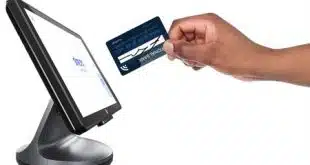While the mobile wallets launched by corporate giants Apple Inc., Alphabet Inc.’s Google unit, and Samsung Electronics Co. Ltd. have sparked a good deal of publicity, not much is known about actual adoption and usage so far, since the companies have been characteristically tightlipped.
But that doesn’t mean researchers who follow the industry aren’t coming up with estimates for the three services, which now operate in a number of markets in addition to the U.S.
Two such reports emerged this week. Google’s Android Pay and Samsung’s Samsung Pay, which both rely on the Android mobile operating system and whose U.S. launches occurred within days of each other in September, have so far induced 13% of Android-phone users to use one or the other service at least once to buy something, according to a report from First Annapolis Consulting, based in Annapolis, Md. Two percent have used one service or the other regularly, meaning weekly or at least twice a month. The corresponding percentages for iOS users with Apple Pay are higher at 20% and 3%, though Apple Pay has been in the market 11 months longer. First Annapolis’s numbers are based on interviews with 1,279 smart-phone owners.
As for total users, some 12 million iOS users have used Apple Pay at least once a month, compared to 5 million Android users who have used Android Pay with the same frequency, according to estimates from Crone Consulting LLC, a San Carlos, Calif.-based firm. Meanwhile, in its first six months, Samsung Pay has attracted 5 million users who have rung up more than $500 million in purchases, Samsung said last week in a post on its Web site.
Crone Consulting’s own analysis confirms 5 million Samsung Pay users as active, that is, using the service at least once a month, Richard Crone, principal at the firm, tells Digital Transactions News.
While those numbers may seem impressive at first glance, they are less so when seen in relation to all smart-phone owners who have the necessary operating system. Relatively few of these have used any of the three wallets. Apple Pay leads the pack, at 6% of iPhone 6 and iPhone 5 users (iPhone 5 can be used with Apple Watch for Apple Pay), followed by Samsung Pay at 4% and Android Pay at merely 1% of Android users, according to Crone Consulting’s estimates. Apple’s lead may simply be attributable to its having been in the market longer.
The low usage rates, however, aren’t because of low awareness. First Annapolis’s survey indicates 63% of Android owners are aware of both Android Pay and Samsung Pay, while 84% of iOS users have heard of Apple Pay. For the entire base of consumers, regardless of the operating system they use, awareness of Apple Pay stood at 73%, while half had heard of the two Android-based wallets.
Market factors, however, will soon be working in the tech-company wallets’ favor. One such factor, according to Crone, is the expected mid-year launch of JPMorgan Chase & Co.’s Chase Pay mobile wallet. That product will immediately incorporate 94 million Chase accounts and will work with readily available in-store barcode readers.
Crone projects the “buzz’ and promotion surrounding this launch will stimulate interest and adoption for competing products. As a result, he figures the user count for Apple Pay, Android Pay, and Samsung Pay will double over the coming 12 months. “Banks that don’t have wallets will promote Apple Pay, Android Pay, and Samsung Pay in an effort to thwart attrition from Chase Pay,” he says. “All boats will rise with the rising tide.’
User satisfaction may well play a role, as well. Among those who do use the services, satisfaction rates are high, according to the First Annapolis study. Fully 85% of the Android-service users reported being “somewhat” or “very” satisfied with either Android Pay or Samsung Pay. Almost all Apple Pay users—94%—reported the same levels of satisfaction.
For the Android-based wallets, credit and debit cards account for about three-quarters of the payment methods users have loaded, with loyalty, store, and prepaid cards making up the rest. This is not dissimilar to the pattern with Apple Pay, though how the cards are used differs somewhat between the Android and iOS wallets. Apple Pay usage in in-app channels is much higher, with 34% of users reporting they use the service exclusively for in-app purchases, compared to 18% for Android Pay and Samsung Pay. Thirty-one percent of the Android-wallet users say they use one or the other service for both point-of-sale and in-app purchases, compared to 18% of Apple Pay users.
Exclusive point-of-sale usage is close, with 48% for Apple Pay and 52% for the two Android wallets.





